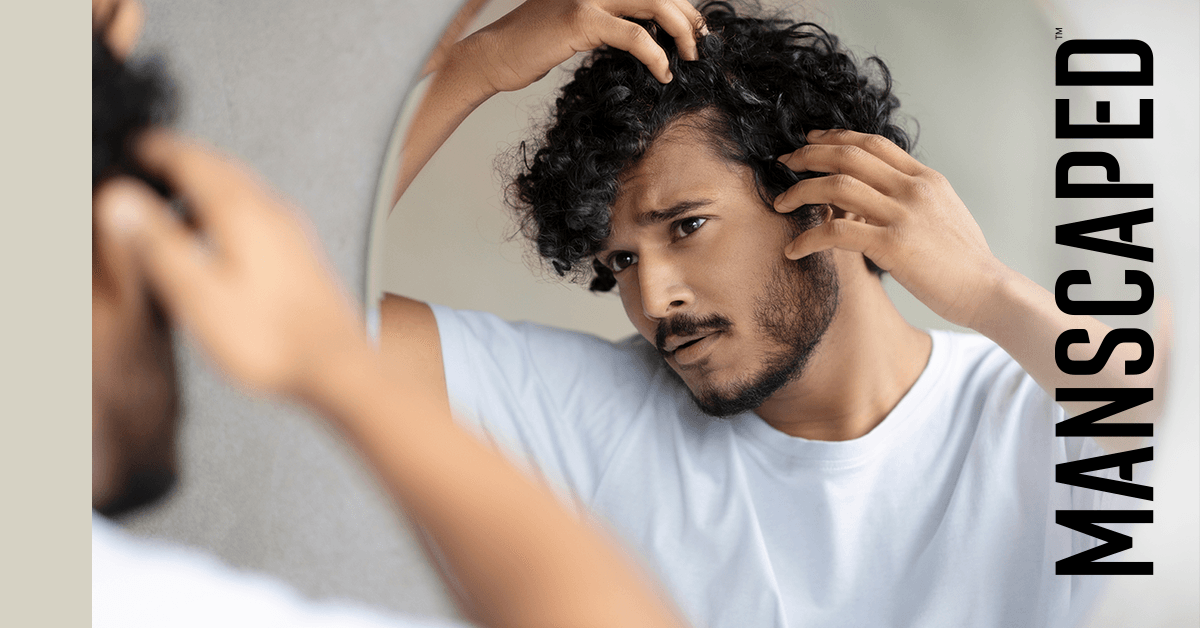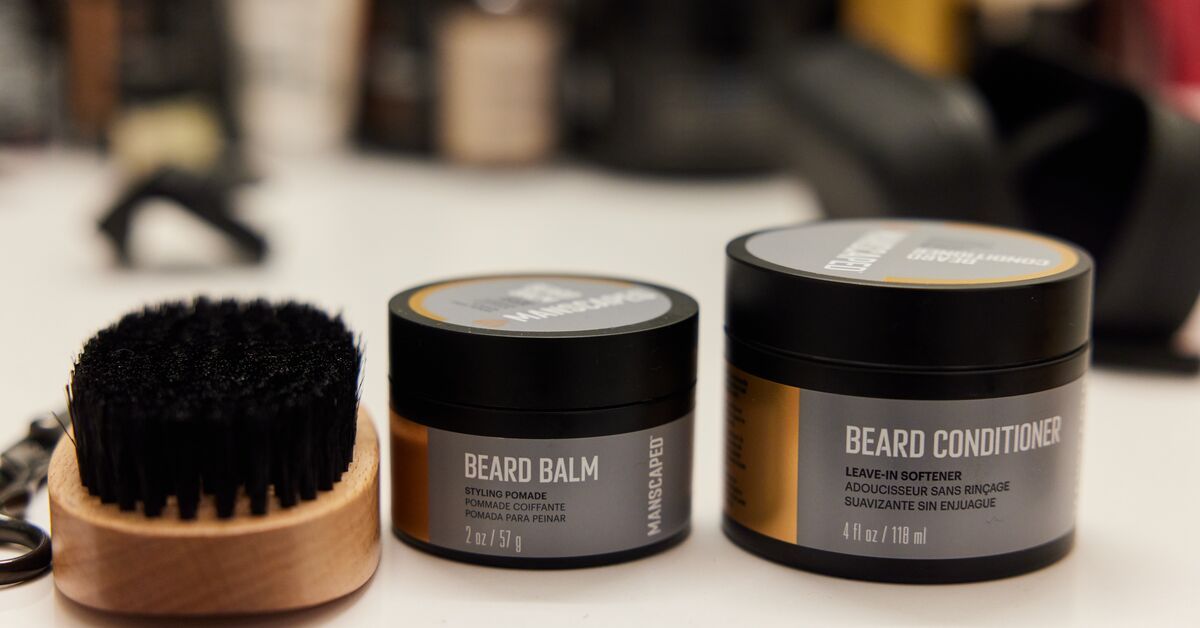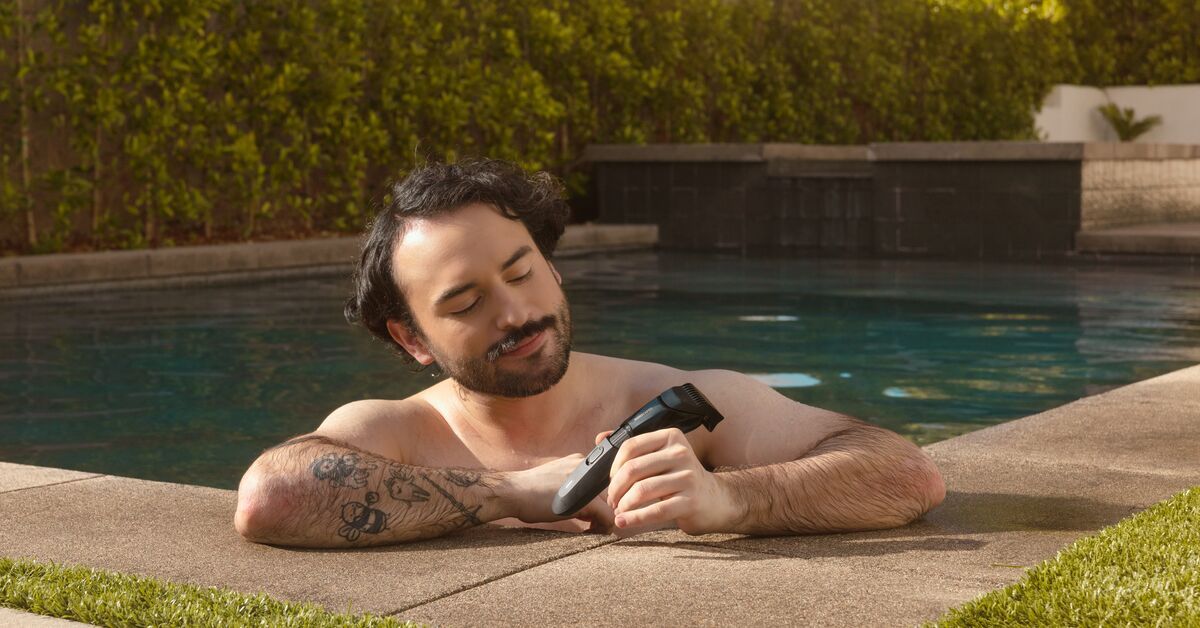
Is that a bit of white in your hair?
Uh oh.
It’s not something you want to see, but before you get too frustrated, know that help is already here.
Assuming the white in your hair is from dandruff flakes (and isn’t a white hair), we actually have a whole tutorial for you. Never fear, MANSCAPED® always has your back. Let’s do a little learning and get that dandruff under control.
Wash your hair.
You have dandruff? Wash your hair.
Done. Next problem.
Okay, there’s more to this than washing your hair. Actually, it’s that washing your hair to defeat dandruff can be a little complicated. Not to worry, we’re going to lay it all out in clear points, but there’s one thing we want to make sure you know. You can’t just randomly wash your hair a couple of times and get rid of dandruff. You have to be more deliberate.
With that in mind, your hair washing really needs to take three things into account: timing, hydration, and exfoliation.
You see, dandruff is a buildup of dead skin cells from your scalp. Those cells turn into the flakes that you see in your hair as you shed them, so washing your hair properly can usually take care of dandruff. We’ll get into ways to beat really stubborn dandruff a little later. For now, let’s cover the basics.

Figure out timing.
You have to wash your hair with the appropriate frequency. For the majority of dandruff cases, fixing your hair-washing schedule is enough. Seriously.
The problem is that there's no universal schedule. You might have heard at one point that people are different? Well, they are, and the perfect schedule for someone else might not suit you.
In general, washing your hair too much or too little can cause dandruff. You need to find the sweet spot in the middle.
This is because washing your hair too much can dry out your scalp. That creates more dead skin cells, and then you get dandruff. But if you don’t wash your hair enough, that can lead to an oil buildup and the oil can collect dead skin cells, causing dandruff to appear.
So what’s the right timing?
For the vast majority of people, washing your hair every day is too much and washing your hair once a week isn’t enough. There definitely are exceptions to this, so keep your own hair in mind as you experiment. But if you’re looking for a place to start, most people benefit from washing their hair every other day or every three days.
Beyond that, if you find that your hair is constantly oily and dandruff-y, then consider washing more frequently. If your hair feels dry, skip a hair-washing session and see if it helps.
Moisturize your mane.
Timing is definitely the best place to start, but there’s a lot more you can do to control dandruff. Moisture is a big part of that.
We’ve already covered that dandruff comes from dead skin cells clumping together. That means that a little scalp lotion can do a lot to prevent that from happening. Except you don’t want to put lotion in your hair. Instead, you want to use moisturizing hair products.
Start with your shampoo and conditioner. Most shampoos have acidic components that are designed to break up hair oils. That’s important for how these shampoos work, but you want your shampoo to also have hydrating elements. Then the shampoo strips excess oil but rehydrates your scalp as it goes.
On top of that, you want to use conditioner regularly. Conditioner is primarily designed to hydrate your hair and scalp and overcome any damage that might be done by your shampoo. If you condition every time you shampoo, your dandruff worries are going to diminish.
The easiest way to do this is with an all-in-one shampoo and conditioner. (The MANSCAPED® option is fantastic.) This automates the process. When you use shampoo, you’re also using conditioner. Life is easy.

One more thing.
If you use styling products, you want stuff that doesn’t dry out your hair. A lot of gels and other products can leave your hair feeling crispy. If you have dandruff, then these products have to go. You want something that helps you style your hair but doesn’t fry it too. You can actually find styling oils or balms that give you control over your hair without turning it crispy.
Exfoliate it.
If you know anything about skin care, then you might have seen this one coming. Since dandruff comes from dead skin cells, one of your most powerful tools against it is exfoliation. This is the process of removing dead skin cells, and it can help control dandruff.
There are a few things you need to know.
First, a lot of shampoos already have very mild chemical exfoliants. (The acids that help remove hair oil also tend to exfoliate a little bit.) So shampooing your hair at all tends to help with dandruff.
In fact, this is another reason why figuring out the right shower schedule can help you with dandruff. (Also remember that you can shower without washing your hair if you need to.)
But sometimes that’s not enough. If you need more powerful exfoliation, then you have two options. First, you can try a gentle agitator. The best ones are silicone. You just gently rub your scalp with it about once a week and it will help prevent any dandruff from building up. Since your scalp is sensitive, make sure you’re using a gentle scrubber.
If that’s not enough, you can try a shampoo with a more powerful chemical exfoliant. These are medicated shampoos. You can get most of them over the counter, but if even that isn’t enough, then go ahead and involve your doctor.
Dandruff is rarely a sign of any terrifying medical conditions, but if you can’t get it under control, then you do want your doctor to figure out exactly what's going on.
That’s really it. That’s what you need to know to tackle dandruff.
04.17.23
Share

Featured Articles
- Your Favorite Ball Deodorant. Now with a New Scent: Perservere.MANSCAPED® + TCS for Testicular Cancer Awareness MonthIntroducing The Lawn Mower® 5.0 Ultra TCS Special Edition and TCS Ball Hero BundleThe Dome Shaver™ Pro vs. The Dome Shaver™ Plus: Which Should You Choose?The Chairman™ Pro vs. The Chairman™ Plus: Which Should You Choose?



